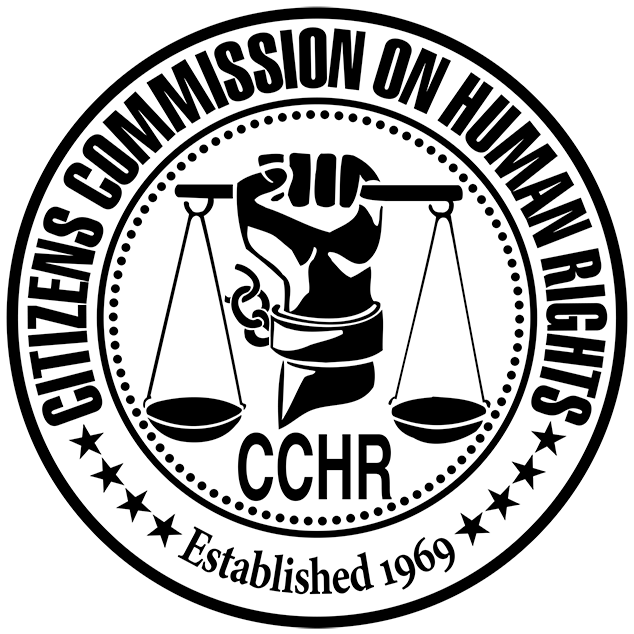The psychiatric industry that profited from proliferating this drug-induced disorder will now profit from treating it.
The uncontrollable muscle movement known as tardive dyskinesia (TD) is a common condition especially linked to the prolonged use of the antipsychotics class of psychiatric drugs. New research shows how emotionally devastating TD is to patients.
Tardive dyskinesia refers to the slow onset of repetitive, involuntary muscle movements of the face, lips, tongue, limbs and torso that can range from a slight tremor, unnoticed by the patient, to uncontrollable movements of the entire body so severe it becomes a disabling condition.

“Tardive dyskinesia is a dreadful disorder caused by all the antipsychotic drugs,” says psychiatrist Peter Breggin, M.D. In addition to the bizarre involuntary movements it causes, “it can impair the diaphragm and breathing, the vocal cords and speech, or the esophagus and swallowing.”
“Especially when severe, TD is often associated with cognitive impairments, dementia, and psychosis,” he wrote. “People who suffer from it tend to become isolated from society and many become disabled.”
A 2019 survey found that 58% of patients were not aware that the antipsychotics they were taking can cause TD. Among those already afflicted with TD, 80% were emotionally distressed by the jerky movements, nearly half (47%) said it affected their job performance, and two-thirds reported a drop in self-esteem (68%) and self-confidence (64%).
Recently, new research explored the toll TD takes on the mental health of those experiencing this drug-induced disorder. The researchers, led by Mallory Farrar, PharmD, RPh, analyzed online comments about TD and found that 64% of the comments were negative, expressing anger or rage about the symptoms and the insecurity from feeling “ugly, weird, or self-conscious.”
“Patients expressed feeling unaccepted…. Some feared being judged by others or being asked about their twitching. A few indicated that they would rather be dead than have [tardive dyskinesia].”
–Researcher Mallory Farrar, PharmD, RPh
“Patients expressed feeling unaccepted by society or uncomfortable in their own skin. Some feared being judged by others or being asked about their twitching. A few indicated that they would rather be dead than have TD,” researchers wrote in BMC Psychiatry. A disclaimer on their study notes that the researchers are employees of a company that manufactures a drug to treat TD.
The symptoms of TD are persistent and usually irreversible. A 2014 study at Emory University’s movement disorders clinic found that only about one in eight patients ever fully recover from TD, leading one of the researchers to conclude that the findings “should emphasize the seriousness and permanency” of TD.
Antipsychotics use is increasing, putting more patients at risk of TD. Some 11.1 million Americans are currently taking antipsychotics, with more than 829,000 of them children under the age of 18. Some 30,000 children 5 years of age or younger, including 1,300 infants, are being given antipsychotics, risking permanent neurological damage at the very start of their lives.

Dr. Breggin, notes: “In recent decades, it has become entirely too common for psychiatrists and other prescribers to give psychiatric drugs to children who could be far better treated by other means.”
A large review of studies on TD found that an average of 20% of those taking antipsychotic drugs develop TD, but estimates in the analyzed studies ranged as high as 50%, depending on the drug and the age of the patients. Even a 20% rate means that some 2.2 million Americans are expected to end up with the neurological damage of TD.
TD induced by antipsychotic drugs most often results from longer-term use, but it can develop even over the short term. The risk increases with age, with incidence rates in older women as high as 30% after one year on antipsychotics.
Race is also a factor in the incidence and prevalence of TD. A 2004 evaluation of found antipsychotic-induced TD is more prevalent in African Americans than Americans of European descent. African Americans are also disproportionately diagnosed with schizophrenia and are more likely to be prescribed antipsychotic drugs in the first place.
TD can persist long after antipsychotic drugs are discontinued and is usually a permanent condition. In a 2013 study, researchers Olga Waln and Joseph Jankovic wrote: “TD tends to persist for years or decades in the majority of patients, even after elimination of the offending drug.”
The adverse effects of antipsychotics even before the emergence of tardive dyskinesia can be severe, including significant weight increase, diabetes, insomnia, tremors, anxiety, pancreatitis, cardiovascular disorders, liver problems, stroke, and death.
A potentially fatal effect of antipsychotics is neuroleptic malignant syndrome, in which the patient develops a fever and becomes confused, agitated and extremely rigid. The syndrome can occur within days or months of taking an antipsychotic drug and can range in severity from mild to life-threatening.
Once TD develops, a solution would be to stop taking the drug that caused it, done under a physician’s supervision. There is evidence that the sooner an antipsychotic drug is discontinued, the better the chance that the TD might resolve over time.
However, the sudden discontinuation of an antipsychotic drug can cause withdrawal symptoms that not only could be severe, but could also make the TD worse. Slowly tapering off the drug may avoid or lessen withdrawal symptoms.
Switching from one antipsychotic drug to another one is also an approach that is used, but all antipsychotics carry the risk of TD, so the progression of the disorder might not be stopped and new adverse effects could be experienced from the replacement drug.
Drug manufacturers have hit on a different and more profitable approach: developing drugs to treat TD, which the patient takes while continuing to take the antipsychotic drug causing the TD. This means the psychiatric industry that profited from causing this neurological disorder will now profit from treating it. In 2019, a drug company that manufactures both antipsychotic drugs and a drug to treat TD predicted sales of its TD drugs would reach more than $2 billion.
These drugs come at a high cost to patients, private insurers, and the taxpayers who pay for the Medicaid and Medicare programs. The retail cost of a standard dose of a TD-treatment drug costs about $80,000 a year per patient.
Worse still, the drugs used to treat TD carry their own risks. Common adverse effects from TD-treatment drugs reportedly include fatigue, sedation, sleepiness, insomnia, depression, restlessness (akathisia), agitation, nausea, and trembling and shaking of the fingers or hands – the latter similar to the symptoms of TD itself. Less common, but more serious side effects include severe depression, suicidality, and neuroleptic malignant syndrome.
TD was first identified as an antipsychotics-induced condition more than 50 years ago. Since then, prescriptions for antipsychotic drugs by psychiatrists and other physicians has steadily increased, along with a growing number of patients experiencing the devastating physical and emotional trauma of TD.
The Citizens Commission on Human Rights (CCHR) continues to raise public awareness and advocate for the full disclosure of the risks of serious side effects and withdrawal symptoms from antipsychotics and other psychiatric drugs, so that consumers and their physicians can make fully informed decisions about starting or stopping the drugs.
CCHR recommends a complete physical examination with lab tests, nutritional and allergy screenings, and a review of all current medications to identify any physical causes of unwanted mental or behavioral symptoms, which might otherwise be misdiagnosed as a psychiatric disorder and incorrectly treated.
WARNING: Anyone wishing to discontinue or change the dose of a psychiatric drug is cautioned to do so only under the supervision of a physician because of potentially dangerous withdrawal symptoms.
